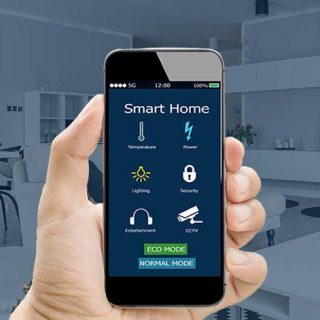In today’s ever-evolving, technology-driven world, real-time systems are the backbone of essential applications across diverse industries. Whether we consider autonomous vehicles in the automotive industry, avionics in aerospace, or the intricate world of medical devices in healthcare, one factor stands paramount: reliability and safety. This is where SafeRTOS emerges as a key player—a tailored real-time operating system designed to meet the challenging demands of safety-critical applications.
Introduction to SafeRTOS:
SafeRTOS, a real-time operating system (RTOS), has been developed entirely to cater the safety-critical applications across diverse industries. With a steadfast commitment to fortifying the security, protection, and reliability of embedded systems, SafeRTOS is a trusted ally in environments where failure is simply not an option.
RTOS like SafeRTOS provides a robust framework for the systematic organization of tasks and resources within real-time environments. However, what truly sets SafeRTOS stands out due to its unwavering focus on safety and security. SafeRTOS has been purposefully designed to not only meet but surpass some of the most stringent safety standards, including ISO 26262 for automotive systems, DO-178C for avionics, and IEC 61508 for industrial applications.
Key Features of SafeRTOS:
SafeRTOS has numerous key features that make it crucial for safety-critical applications:
- Safety Certification Support: SafeRTOS streamlines the path to achieving safety certifications by offering comprehensive documentation and a range of features designed to meet industry standards. It provides support for IEC 61508-3 SIL 3, DO-178C, and ISO 26262 certifications.
- Deterministic Behavior: The hallmark of SafeRTOS lies in its precise timing, ensuring that critical tasks are executed with millisecond accuracy. This deterministic behavior is paramount in applications where timing is of utmost importance.
- Resource Management: SafeRTOS carefully allocates resources, preventing conflicts and optimizing system performance, thus ensuring smooth and efficient operations.
- Memory Protection: Security takes precedence, and SafeRTOS elevates it through memory isolation, effectively preventing unauthorized access and safeguarding sensitive data.
- Real-time Monitoring: Proactive system health monitoring is a critical aspect of SafeRTOS. It offers continuous real-time monitoring, enabling early issue detection and swift resolution to maintain system integrity.
- Small Footprint: SafeRTOS is designed with a small footprint architecture, minimizing memory and code usage. With ROM requirements ranging from 6 to 15 K, RAM usage at just 500 bytes, and a compact stack size of 400 bytes per task, it’s a lightweight yet powerful choice.
- Comprehensive Support: SafeRTOS extends its capabilities to support a wide array of setups, including 32-bit microcontrollers, memory protection units (MPU), queue-based communication, and priority-based scheduling.
Safety Concerns When Using FreeRTOS in Embedded Development
The FreeRTOS kernel has been designed for high performance with minimal resource overhead. However, the absence of several safety features, such as HAZOP and hook functions, is a critical consideration in safety-critical applications. Additionally, users of FreeRTOS in safety-critical applications must be vigilant about potential issues, including resource conflicts, task priority inversion, deadlock, stack overflow, memory leaks, task starvation, challenges related to interrupt handling, synchronization pitfalls, the proper integration of watchdog timers, and the importance of thorough testing to ensure system safety, security, and reliability.
Which RTOS Should You Choose?: A Comparison of SafeRTOS and FreeRTOS
SafeRTOS is a subset of FreeRTOS, although it differs in many aspects. Below is an in-depth analysis that compares and contrasts SafeRTOS and FreeRTOS, which helps in making an informed choice when selecting the right RTOS for your specific needs.
| SafeRTOS | FreeRTOS | |
| Memory Allocation | SafeRTOS allocates memory statically at compile time | FreeRTOS allocates memory dynamically at run time |
| Function Parameter Checking | SafeRTOS verifies the validity of each and every appropriate input parameter | FreeRTOS has a few methods of API function input parameter checking |
| Internal Data Checking | SafeRTOS accomplishes validity and consistency tests on its key internal data by calling a defined error hook function | FreeRTOS does not have any hook function to validate the test |
| Restricted Functionality | SafeRTOS supports only a subset of FreeRTOS components, restricting some FreeRTOS functionality | In FreeRTOS any functionality is not restricted |
Which Certifications Does SafeRTOS Support?
Safety standards such as ISO 26262, DO-178C, and IEC 61508 demand unwavering compliance. SafeRTOS facilitates this process by providing comprehensive documentation and features that help developers in meeting these rigorous safety and security requirements.
- IEC 61508-SIL 3
IEC 61508, is a global safety standard, ensuring functional safety in electrical, electronic, and programmable systems. It delivers procedures and prerequisites for developing safety-critical systems across diverse industries. SIL (Safety Integrity Level) is a fundamental concept in IEC 61508, describing the level of risk reduction provided by safety functions within a system.
SIL 3 is one of the four specified levels in the IEC 61508 standard, ranging from SIL 1 to SIL 4. SIL 3 represents a higher level of safety integrity and signifies a substantial reduction in risk. To achieve SIL 3, a system must meet crucial requirements, including safe and secure development processes, thorough safety analyses, and rigorous validation techniques.
- ISO 26262
ISO 26262 is one of the international standards for operational safety in the automotive industry. It outlines requirements and processes to safeguard electrical and electronic systems in vehicles. ISO 26262 plays a vital role in managing and reducing the risks associated with potential hazards in automotive electronic systems, such as those found in modern cars, trucks, and motorcycles.
- DO-178C
DO-178C, also known as “Software Considerations in Airborne Systems and Equipment Certification,” holds global recognition and acceptance within the aerospace sector. This standard offers comprehensive directives and essential requirements for developing safety-critical software utilized in airborne systems, encompassing aircraft and their related equipment. DO-178C is of utmost importance for ensuring the safety and reliability of software systems within the aviation sector.
Importance of Safe RTOS Across Different Industries:
SafeRTOS provides essential support in industries where safety standards are unwavering and non-negotiable. Here are some examples of where SafeRTOS is indispensable:
- Automotive: As the automotive industry embraces the era of autonomous vehicles, the demand for real-time systems that adhere to ISO 26262 safety standards is paramount. SafeRTOS enables compliance with these standards, ensuring the secure and reliable operation of self-driving cars.
- Aviation: In the aviation sector, SafeRTOS plays a critical role, guaranteeing the utmost reliability and safety of aircraft systems. It serves as the backbone for compliance with DO-178C safety certification conditions, reinforcing the reliability and safety of aircraft systems.
- Medical/ Healthcare: Medical devices such as infusion pumps and heart monitors require a high level of safety and precision. SafeRTOS is a trusted choice for these critical healthcare applications, ensuring that they operate with the utmost safety and accuracy.
- Industrial Automation: In an industry where automation manages complex operations, SafeRTOS guarantees that systems operate reliably and predictably, aligning with standards such as IEC 61508.
The Future of Safety-Critical Systems with Safe RTOS:
SafeRTOS plays a vital role in emerging technologies essential for ensuring the safety, reliability, and security of embedded systems across various industries. As safety standards become increasingly stringent, driven by the rise of technologies like autonomous vehicles and IoT, SafeRTOS continues to play a crucial role in meeting these demands. Its versatility, fault tolerance, and adherence to safety standards make it an indispensable tool for developers and engineers working on safety-critical applications. The future of SafeRTOS is promising as it addresses the complex challenges of an increasingly safety-focused world.
To know more about VOLANSYS’ expertise on SafeRTOS, feel free to contact us.

About the Author: Hitesh Mathukiya
Hitesh is a Senior Firmware Engineer at VOLANSYS, an ACL Digital Company. His major contribution lies in the Embedded Domain, including product development services on different IoT, Automotive applications, and home appliance-based products, using languages like C, C++, and Python. He has an in-depth knowledge of Linux, RTOS, and Bare Metal-based applications and driver development. With over 7 years of experience in embedded software, IOT, he brings valuable expertise to his role.









